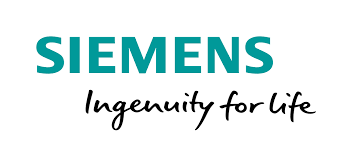Asia Pacific Semiconductor Memory Market Industry Overview, Size, Share, Growth Trends, Research Insights and Forecast (2025–2032)
Asia Pacific Semiconductor Memory Market size was valued at USD 69.37 Bn. in 2024 and is expected to reach USD 122.44 Bn. by 2032, at a CAGR of 7.36%.
Format : PDF | Report ID : SMR_2291
Asia Pacific Semiconductor Memory Market Overview
Semiconductor memory is an electronic component that functions as computer memory, utilizing integrated circuit (IC) technology to store digital data. These memories are categorized based on their data storage and access methods, primarily into volatile RAM (Random Access Memory) and non-volatile ROM (Read Only Memory). Semiconductor memory is a commonly used element in electronic devices, applicable in any equipment that incorporates a microprocessor or microcontroller.
The Asia Pacific Semiconductor Memory Market, led by China, Japan, South Korea, and Taiwan, has emerged as the four leading semiconductor countries. The demand for semiconductor memory is expected to grow globally due to its increasing utilization across various sectors, including automotive, consumer electronics, information technology, and telecommunications. This growth is further fueled by the convergence of consumer electronics with automotive and manufacturing applications, particularly through the rapid adoption of the Internet of Things (IoT).
These advancements enable the development of smart, automated systems that enhance operational management and manufacturing efficiency, leading to improved productivity and reduced costs. Additionally, in recent years, several companies have adopted high-capacity semiconductor memory chips to manage the complexities of data centers, contributing to the overall market expansion.
Smartphone subscriptions in India will grow at a compound annual growth rate (CAGR) of 5%, reaching over 1.14 billion by 2030, up from 840 million in 2023. Similarly, China saw an increase in cell phone subscriptions, rising from 203.71 million in early 2023 to 234.06 million by January and February 2024. These trends create a favorable environment for Asia Pacific Semiconductor Memory market growth.
![]()
To get more Insights: Request Free Sample Report
Asia Pacific Semiconductor Memory Market Dynamics
Rising Demand for Consumer Electronics is Shaping Asia Pacific Semiconductor Memory Market
The consumer electronics sector is a major consumer of semiconductor memory, which is essential for the charging infrastructure of various devices like smartphones and computers. The demand for electronic devices has surged in recent years, driven by factors such as increased internet access, higher disposable incomes, and a growing awareness of digital technologies. The rise in the use of tablets, smartphones, and other portable computing devices is particularly noteworthy. For example,
India is also targeting significant milestones in electronics manufacturing, aiming for a production value of USD 300 billion and exports worth USD 120 billion by FY26. In the fiscal year 2022-2023, the country produced wearables, including earphones and smartwatches, valued at USD 970.31 million. Emerging trends like smart cities and smart homes are further propelling the consumer electronics market. Manufacturers of household appliances are increasingly incorporating Internet of Things (IoT) technologies to enhance connectivity for consumers. To meet rising demand, leading companies are forming strategic partnerships and expanding their production capabilities.
- In March 2023, Winbond and STMicroelectronics announced a collaboration to integrate high-performance memory with STM32 devices for consumer and smart industrial applications.
Asia Pacific Semiconductor Memory Market Segmentation
By Type, The Asia-Pacific region is experiencing significant growth in the DRAM semiconductor market, DRAM Type held the largest market share i.e. XX% in 2024, Driven by the increasing demand for mobile devices in emerging economies like India and China. This growth is further supported by favorable government policies aimed at promoting local DRAM production. Additionally, the region is witnessing advancements in DRAM technology that caters to the automotive sector, particularly for self-driving vehicles and advanced driver assistance systems (ADAS). These developments underscore the importance of DRAM in enhancing performance, efficiency, and capacity across various applications, making the Asia-Pacific a crucial player in the global semiconductor landscape
- In March 2022, ChangXin Memory Technology (CXMT) announced plans to manufacture DDR5 DRAM in China, aiming to invest in more R&D and boost production capacity.
By Region, China, Japan, South Korea, and Taiwan have emerged as the leading four semiconductor nations in the Asia Pacific region. In 2024 China dominates the Asia-Pacific semiconductor memory market. Technological advancements in the consumer electronics sector have significantly contributed to the widespread adoption of these devices, fostering a conducive environment for market growth.
As reported by China's Ministry of Industry and Information Technology, the nation leads globally in the production and sales of consumer electronics, attributed to enhanced innovation and brand development capabilities. To maintain its dominant position in this sector, the Chinese government is implementing various initiatives aimed at improving productivity across computing, storage, and display supply chains, while also focusing on the integration and innovation of new technologies in critical industries.
A key factor driving this Asia Pacific Semiconductor Memory Market growth is the rise of autonomous vehicles in China. The government has been establishing technology standards and industry guidelines for these vehicles, with Beijing being the first city to permit open-road testing for autonomous cars. Notably, companies like Xpeng are expanding their advanced driver assistance systems (ADAS) to numerous cities, enhancing their competitive edge in smart driving technologies.
Additionally, the demand for data centers is surging, leading to increased needs for memory components. For example, local authorities in Guizhou province announced the operation or construction of 39 significant data centers as of October 2023. Overall, the growth in the data center and automotive sectors is expected to generate substantial market demand, while the consumer electronics sector is anticipated to maintain steady demand throughout the forecast period.
Asia Pacific Semiconductor Memory Market Competitive Landscape
The Asia Pacific semiconductor memory market is characterized by intense competition, with numerous vendors supplying memory solutions to both domestic and international markets. The market is fragmented, leading major players to pursue strategic partnerships, mergers, and acquisitions to enhance their market presence. Key companies in this sector include Samsung Electronics Co. Ltd, Micron Technology Inc., SK Hynix Inc., and ROHM Co. Ltd.
Recent advancements in the market include:
- SK Hynix's Development of HBM3E (August 2023): SK Hynix announced the successful development of HBM3E, a next-generation high-bandwidth memory designed for AI applications. This new product excels in speed—crucial for AI memory—while also improving capacity, heat dissipation, and user-friendliness.
- Samsung's GDDR7 DRAM Completion (July 2023): Samsung Electronics revealed that it has completed the development of the first Graphics Double Data Rate 7 (GDDR7) DRAM. This new DRAM will be tested in next-generation systems for key customers this year, positioning Samsung for growth in the graphics market and reinforcing its technological leadership.
The report aims to provide industry stakeholders with a thorough study of the Europe Semiconductor Memory Market. The research presents the industry& historical and present state with projected market size and trends, analyzing complex data in an easy-to-read manner. The research includes PORTER and PESTLE analyses along with the possible effects of market microeconomic factors. Analyzing both internal and external elements that could have a good or negative impact on the firm will provide decision-makers with a clear picture of the industry& future. By understanding the market segments and projecting the size of the Europe Semiconductor Memory market, the reports also help understand the market dynamics and structure.
Asia Pacific Semiconductor Memory Market Scope
|
Asia Pacific Semiconductor Memory Market |
|
|
Market Size in 2024 |
USD 69.37 Bn. |
|
Market Size in 2032 |
USD 122.44 Bn. |
|
CAGR (2025-2032) |
7.36% |
|
Historic Data |
2019-2024 |
|
Base Year |
2024 |
|
Forecast Period |
2025-2032 |
|
Market Segments |
Memory Type
|
|
By Application
|
|
|
Country Scope |
China, India, Japan, South Korea, Australia, ASEAN, Rest of APAC |
Asia Pacific Semiconductor Memory Market Key players
- Samsung Electronics Co. Ltd
- Micron Technology Inc.
- SK Hynix Inc.
- ROHM Co. Ltd
- STMicroelectronics NV
- Intel Corporation
- Nvidia Corporation
- Kioxia Corporation
- Infineon Technologies AG
- Toshiba Electronic Devices & Storage Corporation
- Macronix International Co., Ltd. (Taiwan)
- Fujitsu Limited (Japan)
- Shanghai Huali Microelectronics Corporation (HLMC)
- Powerchip Technology Corporation
For Global Scenario:
Semiconductor Memory Market: Global Industry Analysis and Forecast (2024-2030)
Frequently Asked Questions
China is expected to dominate the Asia Pacific Semiconductor Memory Market during the forecast period.
The Asia Pacific Semiconductor Memory Market size is expected to reach USD 122.44 billion by 2032.
The top players in the Asia Pacific Semiconductor Memory Market are Samsung Electronics Co. Ltd, Micron Technology Inc., SK Hynix Inc., and ROHM Co. Ltd.
The segments covered in the Asia Pacific Semiconductor Memory Market report are based on Memory Type, Application, and country.
1. Asia Pacific Semiconductor Memory Market: Research Methodology
2. Asia Pacific Semiconductor Memory Market Introduction
2.1. Study Assumption and Market Definition
2.2. Scope of the Study
2.3. Executive Summary
3. Asia Pacific Semiconductor Memory Market: Competitive Landscape
3.1. SMR Competition Matrix
3.2. Competitive Landscape
3.3. Key Players Benchmarking
3.3.1. Company Name
3.3.2. Product Segment
3.3.3. End-user Segment
3.3.4. Revenue (2024)
3.3.5. Company Headquarter
3.4. Market Structure
3.4.1. Market Leaders
3.4.2. Market Followers
3.4.3. Emerging Players
3.5. Mergers and Acquisitions Details
4. Asia Pacific Semiconductor Memory Market: Dynamics
4.1. Semiconductor Memory Market Trends
4.2. Semiconductor Memory Market Dynamics
4.2.1. Drivers
4.2.2. Restraints
4.2.3. Opportunities
4.2.4. Challenges
4.3. PORTER’s Five Forces Analysis
4.4. PESTLE Analysis
4.5. Application Roadmap
4.6. Regulatory Landscape
5. Asia Pacific Semiconductor Memory Market Size and Forecast by Segmentation (Value in USD Million) (2024-2032)
5.1. Asia Pacific Semiconductor Memory Market Size and Forecast, By Memory Type (2024-2032)
5.1.1. DRAM
5.1.2. SRAM
5.1.3. ROM
5.1.4. EEPROM
5.1.5. Others
5.2. Asia Pacific Semiconductor Memory Market Size and Forecast, By Application (2024-2032)
5.2.1. Consumer Electronics
5.2.2. IT and Telecommunication
5.2.3. Automotive Industrial
5.2.4. Aerospace and Defence
5.2.5. Medical
5.2.6. Others
5.3. Asia Pacific Asia Pacific Managed Security Service Market Size and Forecast, by Country (2024-2032)
5.3.1. China
5.3.2. S Korea
5.3.3. Japan
5.3.4. India
5.3.5. Australia
5.3.6. ASEAN
5.3.6.1. Indonesia
5.3.6.2. Vietnam
5.3.6.3. Laos
5.3.6.4. Brunei
5.3.6.5. Thailand
5.3.6.6. Myanmar
5.3.6.7. Philippines
5.3.6.8. Cambodia
5.3.6.9. Singapore
5.3.6.10. Malaysia.
5.3.7. New Zealand
5.3.8. Taiwan
5.3.9. Rest of Asia Pacific
6. Company Profile: Key Players
6.1. Samsung Electronics Co. Ltd
6.1.1. Company Overview
6.1.2. Business Portfolio
6.1.3. Financial Overview
6.1.4. SWOT Analysis
6.1.5. Strategic Analysis
6.1.6. Recent Developments
6.2. Micron Technology Inc.
6.3. SK Hynix Inc.
6.4. ROHM Co. Ltd
6.5. STMicroelectronics NV
6.6. Intel Corporation
6.7. Nvidia Corporation
6.8. Kioxia Corporation
6.9. Infineon Technologies AG
6.10. Toshiba Electronic Devices & Storage Corporation
6.11. Macronix International Co., Ltd. (Taiwan)
6.12. Fujitsu Limited (Japan)
6.13. Shanghai Huali Microelectronics Corporation (HLMC)
6.14. Powerchip Technology Corporation
7. Key Findings
8. Industry Recommendations
















